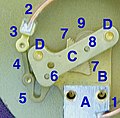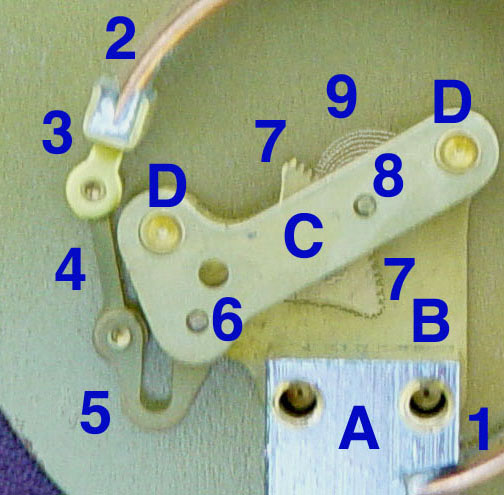English: Mechanics of a pressure gauge, annotated
Annotated internals of a pressure gauge, contrast enhanced.
Mechanical details
Stationary parts:
A: Receiver block. This joins the inlet pipe to the fixed end of the Bourdon tube (1) and secures the chassies plate (B). The two holes receive screws that secure the case.
B: Chassies Plate. The face card is attached to this on the opposite side. It contains bearing holes for the axles.
C: Secondary Chassis Plate. It supports the outer ends of the axles.
D: Posts to join and space the two chassis plates.
Moving Parts
1: Stationary end of Bourdon tube. This communicates with the inlet pipe through the receiver block.
2: Moving end of bourdon tube. This end is sealed.
3: Pivot and pivot pin.
4: Link joining pivot pin to lever (5) with pins to allow joint rotation.
5: Lever. This an extension of the sector gear (7).
6: Sector gear axle pin.
7: Sector gear.
8: Indicator needle axle. This has a spur gear that engages the sector gear (7) and extends through the face to drive the indicator needle. Due to the short distance between the lever arm link boss and the pivot pin and the difference between the effective radius of the sector gear and that of the spur gear, any motion of the bourden tube is greatly amplified. A small motion of the tube results in a large motion of the indicator needle.
9: Hair spring to preload the gear train to reduce gear lash and
hysteresis.

